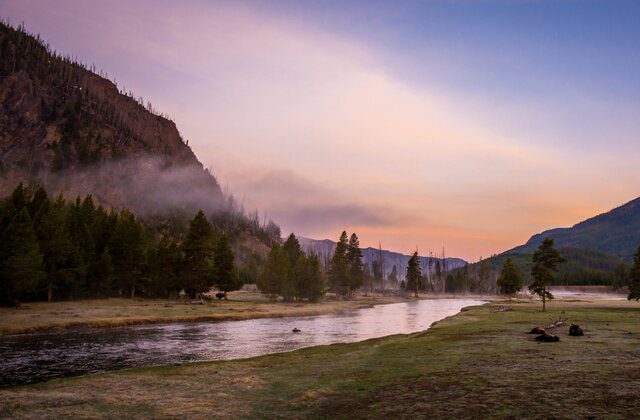Camping in a national park is an unparalleled opportunity to immerse yourself in nature and relish the splendor of the great outdoors. With more than 60 designated national parks scattered across the United States, choosing the perfect one for your camping escapade can be quite a task. In this guide, we’ll delve into some of the best national parks for camping and offer insights on crucial factors to ponder before embarking on your journey.
Overview of Best National Parks for Camping
National parks encompass a diverse array of camping options, ranging from secluded primitive sites to fully-equipped campgrounds. These designated areas afford visitors the chance to spend the night within the park premises, allowing for an intimate encounter with nature’s magnificence.
Keep in mind that camping in national parks typically necessitates a permit or reservation, underscoring the importance of meticulous planning and booking in advance.
What to Consider Before You Go
Before setting off on your camping expedition, it’s essential to consider several key factors:
- Season: Each national park may have specific camping seasons, while some offer year-round camping opportunities. Consulting the park’s website for information on campground availability is crucial.
- Amenities: Campgrounds vary in terms of amenities, such as access to running water, restroom facilities, and designated fire pits. Assess your preferences regarding amenities and choose a campground accordingly.
- Accessibility: Some campsites may require traversing hiking trails or navigating rugged terrain. Verify the accessibility of your chosen campground and plan your journey accordingly.
- Weather: National parks are subject to diverse weather conditions. It’s imperative to pack appropriate gear and attire tailored to the anticipated weather patterns.
- Rules and Regulations: Each national park imposes specific rules and regulations that visitors must adhere to. Familiarize yourself with these guidelines beforehand to ensure a smooth and enjoyable camping experience.
Top 5 National Parks for Camping
Now, let’s explore five of the best national parks revered for their exceptional camping offerings:
Yosemite National Park
Nestled in California, Yosemite National Park is renowned for its majestic waterfalls, ancient sequoias, and imposing granite cliffs. The park boasts a variety of campgrounds catering to diverse preferences, from rustic to fully-facilitated, enabling visitors to revel in nature’s splendor while enjoying modern comforts.
Yellowstone National Park
Yellowstone captivates visitors with its awe-inspiring geysers, thermal springs, and abundant wildlife. The park features 12 campgrounds operational during the summer months, each offering a unique camping experience tailored to different preferences.
Grand Canyon National Park
As one of the world’s natural wonders, the Grand Canyon entices adventurers with its unparalleled vistas and rugged landscapes. The North Rim offers a secluded and primitive camping experience, while the South Rim boasts more developed campgrounds affording breathtaking canyon views.
Zion National Park
Situated in Utah, Zion National Park enchants visitors with its towering red cliffs, narrow canyons, and panoramic vistas. The park offers three campgrounds conveniently located near hiking trails and other attractions, providing an ideal base for exploration.
Rocky Mountain National Park
With its soaring peaks, crystalline lakes, and diverse wildlife, Rocky Mountain National Park is a paradise for outdoor enthusiasts. The park features five campgrounds, each offering a unique ambiance and recreational opportunities amidst breathtaking natural scenery.
Useful Tips on Camping in National Parks
As you plan your camping adventure in national parks, consider these useful tips:
- Make reservations early: Many national parks require advance camping reservations, so it’s advisable to plan and book well in advance to secure your spot.
- Pack lightly: National parks have limited space and resources, necessitating a minimalist approach to packing. Bring only the essentials to optimize space and minimize environmental impact.
- Follow park rules: To preserve the pristine beauty of national parks, adhere to all park regulations, including guidelines for campfires and waste disposal.
- Respect wildlife: Remember that you are a guest in the animals’ habitat. Maintain a respectful distance from wildlife, refrain from feeding them, and dispose of waste responsibly to minimize human impact on their environment.
- Leave no trace: When camping in national parks, practice Leave No Trace principles by properly disposing of waste, refraining from disturbing natural elements, and leaving the environment as you found it.
Final Thoughts on the Best National Parks for Camping
In conclusion, camping in national parks offers a unique opportunity to commune with nature and create lasting memories amidst breathtaking landscapes. Whether you’re a seasoned camper or a novice adventurer, there’s a national park campground waiting to welcome you.
So gather your camping gear, embark on your next wilderness expedition, and relish the unparalleled beauty of these remarkable natural treasures. Happy trails!






